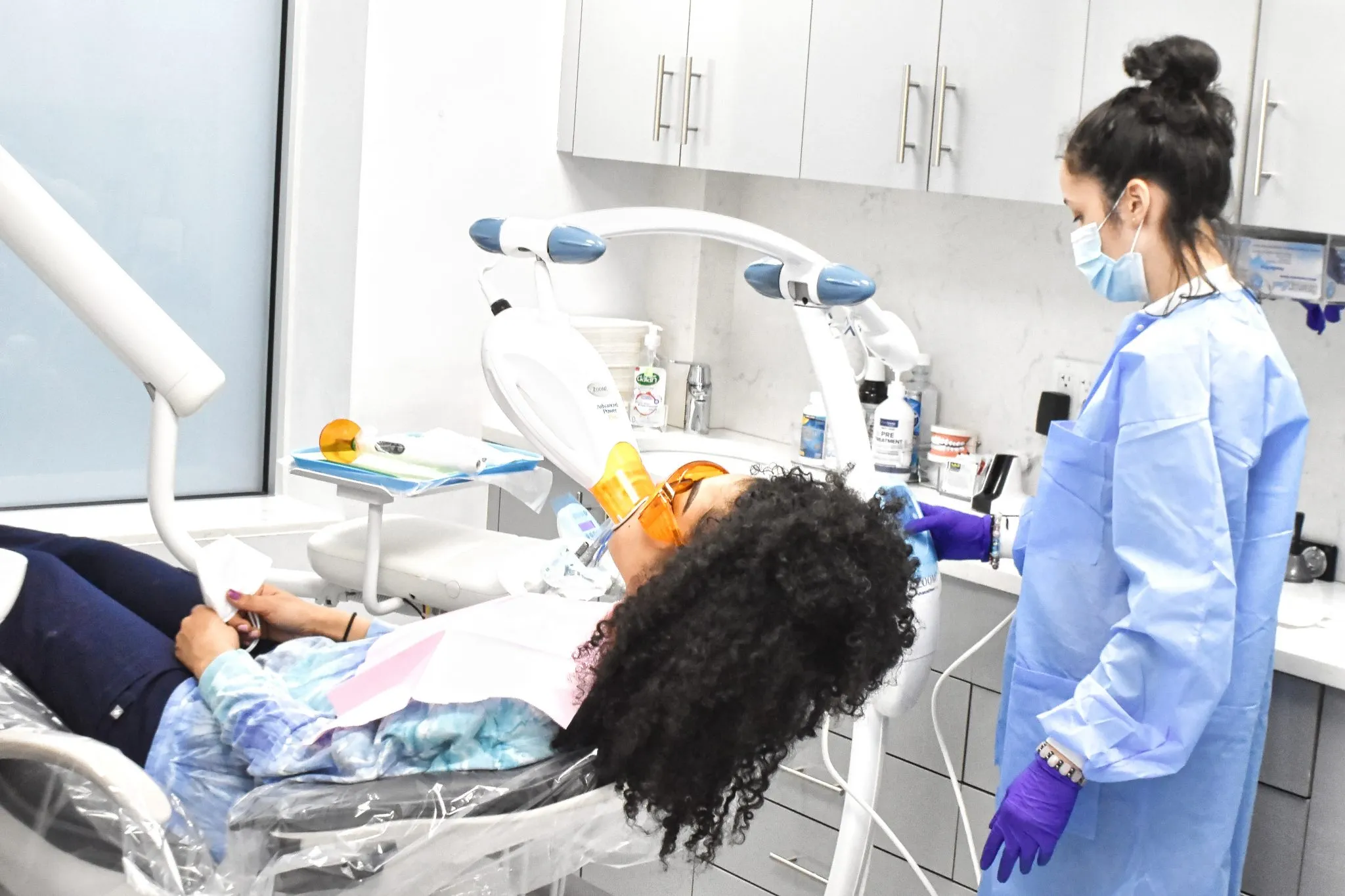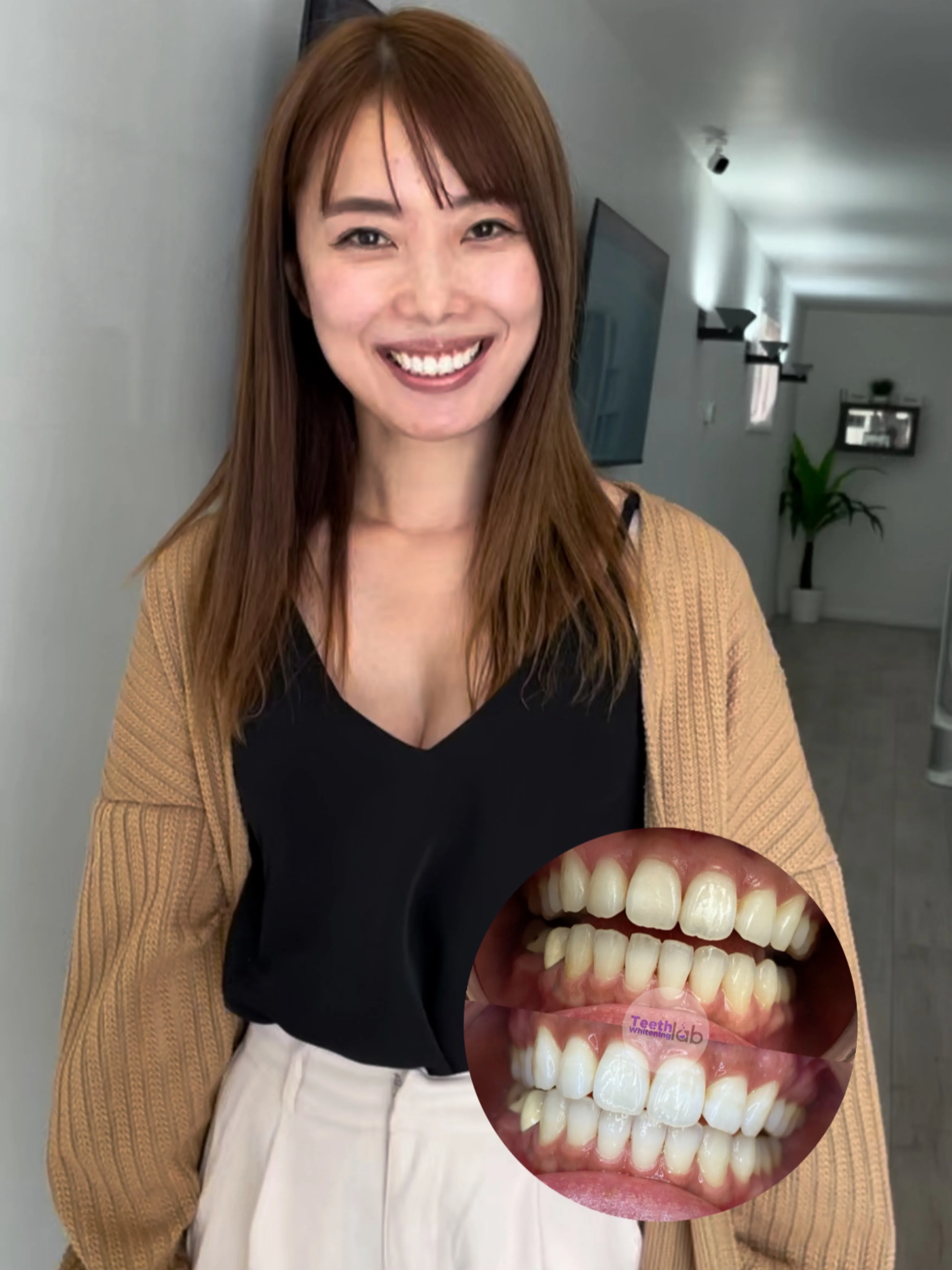Understanding Teeth Whitening in Long Island NY
Teeth whitening has become a popular cosmetic dentistry procedure, especially in areas like Long Island NY, where residents prioritize their appearance and oral health. A brighter, whiter smile can significantly boost your confidence and make a positive impression. The process involves removing stains and discoloration from the teeth, resulting in a more youthful and attractive look. Several factors can lead to stained teeth, including the consumption of coffee, tea, red wine, and tobacco use. Aging also plays a role, as the enamel thins over time, revealing the yellowish dentin underneath. Understanding the different teeth whitening options available is crucial to achieving the best results and maintaining a healthy smile. This comprehensive guide will explore various methods, from professional in-office treatments to convenient at-home solutions, helping you make an informed decision for a brighter, more radiant smile on Long Island NY.
Types of Teeth Whitening Procedures
When considering teeth whitening in Long Island NY, it is essential to understand the different procedures available. These can generally be categorized into in-office treatments performed by dental professionals and at-home options you can use on your own. Each method has its advantages and disadvantages, and the best choice depends on your individual needs, the severity of staining, and your budget. In-office whitening typically provides the most dramatic and immediate results, while at-home methods offer convenience and affordability. The specific type of whitening procedure your dentist recommends will depend on a variety of factors, including the current condition of your teeth, the desired level of whitening, and your overall oral health. It’s important to discuss these options with your dentist to determine the best path for achieving your desired smile transformation.
In-Office Teeth Whitening

In-office teeth whitening, also known as professional teeth whitening, is performed by a dentist or a trained dental professional in their office. This method typically involves a higher concentration of bleaching agents than at-home products, leading to faster and more noticeable results. The procedure usually begins with a thorough cleaning of your teeth to remove plaque and debris. A protective barrier is then applied to your gums to prevent irritation from the whitening agent. The whitening gel is applied to the teeth, and a special light or laser may be used to enhance the bleaching process. The entire procedure usually takes about one to two hours, and you can often see a significant improvement in the brightness of your teeth immediately after the treatment. In-office whitening is ideal for those seeking quick and dramatic results under the supervision of a dental expert, providing both effectiveness and safety.
Benefits of In-Office Whitening
In-office teeth whitening offers several advantages that make it a popular choice for many individuals in Long Island NY. Firstly, it provides immediate results, allowing you to walk out of the dentist’s office with a noticeably brighter smile. The higher concentration of whitening agents used in the professional setting leads to more effective stain removal and a more dramatic transformation compared to at-home options. Secondly, the procedure is performed under the supervision of a dental professional, ensuring safety and minimizing the risk of potential side effects such as gum irritation or tooth sensitivity. Dentists can also assess your oral health before the procedure and address any underlying issues that might affect the whitening process. Furthermore, in-office whitening often provides a more comfortable and controlled experience, allowing you to relax while professionals handle the process. Finally, the convenience and time-saving aspect are appealing, as the entire procedure is completed in a single visit, saving you time and effort compared to at-home treatments that require consistent application over several weeks.
At-Home Teeth Whitening Options
For those seeking a more convenient and affordable teeth whitening solution, at-home options are readily available. These methods offer flexibility and can be used in the comfort of your own home. There are several types of at-home whitening products, each with its own set of instructions and potential results. It is crucial to choose products approved by your dentist or dental professional to ensure both safety and effectiveness. While at-home whitening may take longer to achieve the desired results than in-office treatments, they can still deliver a noticeable improvement in the brightness of your teeth when used correctly and consistently. Consulting with your dentist before starting any at-home whitening regimen is recommended to determine the most suitable product for your needs and to address any potential concerns.
Over-the-Counter Whitening Products

Over-the-counter teeth whitening products are widely available at drugstores and supermarkets on Long Island NY, making them an easily accessible option for many individuals. These products include whitening toothpaste, whitening strips, and whitening gels applied using trays. Whitening toothpastes typically contain mild abrasives or chemical agents that help remove surface stains, resulting in a slightly brighter appearance. Whitening strips are thin, flexible strips coated with a peroxide-based whitening agent that you apply directly to your teeth. Whitening gels are applied using custom or pre-formed trays, allowing the whitening agent to remain in contact with your teeth for a specified period. The effectiveness of over-the-counter products varies, and they usually contain a lower concentration of whitening agents compared to professional treatments. It is important to follow the instructions carefully and be aware that results may be less dramatic and take longer to appear compared to in-office whitening or custom-fitted trays. Furthermore, sensitivity is a potential side effect, so it’s essential to use these products as directed to minimize any discomfort.
Custom Whitening Trays
Custom whitening trays offer a more personalized and effective at-home teeth whitening experience. Your dentist will create these trays by taking impressions of your teeth, ensuring a perfect fit. This customized fit maximizes the contact between the whitening gel and your teeth, leading to more even and effective results. You will receive a professional-strength whitening gel from your dentist to use in conjunction with the trays. The use of a custom tray minimizes the risk of the whitening agent coming into contact with your gums, reducing the likelihood of irritation. Your dentist will provide specific instructions on how to use the trays and the duration of the treatment. Custom trays offer a balance between the convenience of at-home whitening and the professional guidance of a dentist, often delivering better results than over-the-counter products while allowing you to whiten your teeth on your schedule. They are a great option for people in Long Island NY seeking a reliable way to enhance their smile from the comfort of their homes.
Choosing the Right Teeth Whitening Option for You
Selecting the best teeth whitening option requires careful consideration of your individual needs and circumstances. Several factors can influence your decision, including your budget, the severity of the staining, and your desired level of whitening. For those seeking the quickest and most dramatic results, in-office whitening is often the preferred choice, especially if you have a special event or want to see immediate improvement. If you are on a budget, over-the-counter products may be a more accessible option, though you should be aware that the results may be more gradual and less significant. Custom whitening trays offer a good middle ground, combining effectiveness with the convenience of at-home use. Consulting with your dentist is essential for personalized recommendations and to ensure that your chosen method is safe and suitable for your oral health. Your dentist can assess your teeth, identify any underlying issues, and provide guidance tailored to your specific situation. It is vital to weigh the pros and cons of each option carefully to make an informed decision that aligns with your goals and preferences.
Factors to Consider

Several factors should guide your decision when selecting a teeth whitening method in Long Island NY. Firstly, consider the level of staining and discoloration on your teeth. More severe stains may require a more potent whitening treatment, such as in-office procedures. Your budget is another important factor, as the cost of teeth whitening varies significantly depending on the chosen method. In-office treatments tend to be more expensive than at-home options. Sensitivity is also a crucial consideration. Some individuals may experience increased tooth sensitivity after whitening. If you have sensitive teeth, discuss this with your dentist, as they may recommend a desensitizing treatment or a lower concentration of whitening agent. Your lifestyle and habits also play a role; for example, if you frequently consume coffee, tea, or red wine, you may need to whiten your teeth more often to maintain your desired shade. Finally, your overall oral health is a significant consideration. Addressing any existing dental issues, like cavities or gum disease, is crucial before starting any whitening treatment. Consulting with a dental professional will help you consider these factors to make the best choice.
Consultation with a Dentist
A consultation with a dentist is an essential step before undergoing any teeth whitening procedure. During the consultation, your dentist will examine your teeth and gums to assess your overall oral health and determine the best whitening option for you. They will discuss your expectations and desired results, considering the current condition of your teeth and the severity of any existing staining. Your dentist can identify any potential issues that might impact the effectiveness of the whitening treatment, such as cavities, gum disease, or existing dental restorations. They will also explain the different teeth whitening methods available, including in-office treatments, at-home options, and the specific products involved. This is the perfect opportunity to ask questions and address any concerns you might have about the process, side effects, or cost. The dentist can also recommend pre-treatment steps, such as a professional cleaning or the use of a desensitizing toothpaste if you have sensitive teeth. A dental consultation ensures a safe and effective teeth whitening experience.
The Teeth Whitening Process
Understanding the teeth whitening process is crucial whether you opt for an in-office treatment or an at-home solution. The process involves several steps that are designed to safely and effectively remove stains and discoloration, resulting in a brighter smile. While the specific steps may vary depending on the chosen method, the fundamental principles remain the same. Knowing what to expect can help ease any anxiety and ensure a smooth and successful experience. The overall goal is to enhance your smile and boost your confidence while maintaining the health and integrity of your teeth. From the initial preparation to the final post-treatment care, each step plays a vital role in achieving your desired results. For individuals in Long Island NY, having a clear understanding of the process will enable them to make informed decisions and effectively manage their expectations.
Pre-Treatment Preparation

Pre-treatment preparation is a crucial step in the teeth whitening process, ensuring that your teeth are ready to receive the whitening treatment. This typically involves a thorough professional cleaning performed by your dentist or dental hygienist. The cleaning removes plaque, tartar, and surface stains, allowing the whitening agent to effectively penetrate the enamel. If you have any existing dental work, such as fillings or crowns, your dentist will evaluate their condition to ensure they are compatible with the whitening process. The whitening agents do not affect the color of existing dental restorations. Your dentist may recommend that you address any existing dental issues before starting whitening to ensure the best outcome. For those with sensitive teeth, your dentist might suggest using a desensitizing toothpaste for a few weeks before the treatment to minimize any discomfort. Following your dentist’s pre-treatment instructions will help you achieve optimal results and a brighter, healthier smile.
The Whitening Session
The whitening session itself varies depending on the chosen method, but the general principles remain consistent. For in-office treatments, your dentist will apply a protective barrier to your gums to prevent irritation from the whitening agent. The whitening gel, which contains a high concentration of hydrogen peroxide or carbamide peroxide, is then applied to the surface of your teeth. In some cases, a special light or laser is used to activate the whitening agent and accelerate the process. The treatment typically involves multiple applications of the gel over a period of time. During at-home whitening, you will apply the whitening gel or strips according to the instructions provided by your dentist or in the product packaging. It is essential to follow the instructions carefully to ensure the best results and minimize the risk of side effects. Whether in the office or at home, the whitening session requires diligence, and the process is designed to effectively remove stains and lighten the shade of your teeth.
Post-Treatment Care and Maintenance
After your teeth whitening treatment, it’s essential to follow post-treatment care instructions to maintain your new, brighter smile. Proper care helps to preserve the results of the whitening process and minimize any potential side effects. This includes avoiding certain foods and drinks that can stain your teeth, maintaining good oral hygiene practices, and scheduling regular dental checkups. By taking these steps, you can extend the longevity of your whitened smile and ensure optimal oral health. Post-treatment care is not just about aesthetics; it also contributes to the overall health and well-being of your teeth and gums. Individuals in Long Island NY who prioritize post-treatment care can enjoy their brighter smiles for an extended period.
Maintaining Your Bright Smile

Maintaining your bright, white smile requires a commitment to ongoing care and the adoption of healthy habits. One of the most important steps is to avoid or limit the consumption of foods and drinks that can stain your teeth. This includes coffee, tea, red wine, and dark-colored sodas. If you do consume these beverages, consider using a straw to minimize contact with your teeth. Additionally, it is important to practice good oral hygiene, including brushing your teeth twice a day with fluoride toothpaste, flossing daily, and using mouthwash. Regular dental checkups and professional cleanings are also essential for removing surface stains and maintaining overall oral health. Your dentist may recommend touch-up whitening treatments or the use of whitening toothpaste to help sustain your results. By following these guidelines, you can enjoy a vibrant, radiant smile for a long time.
Foods and Drinks to Avoid
To prevent staining and maintain your bright smile, it’s crucial to be mindful of the foods and drinks you consume. Certain items are known to stain teeth and can undo the effects of your whitening treatment. Coffee and tea are major culprits, as they contain tannins that can darken the enamel. Red wine is another significant offender due to its high levels of chromogens. Dark-colored sodas, fruit juices, and sports drinks can also contribute to staining. Foods like berries, soy sauce, and curry can stain teeth. If you can’t avoid these items entirely, consume them in moderation and rinse your mouth with water after eating or drinking them. Consider using a straw when drinking staining beverages to minimize contact with your teeth. By making informed food and beverage choices, you can help preserve your whitened smile and keep it looking its best.
Oral Hygiene Practices
Maintaining excellent oral hygiene is crucial for sustaining a bright, healthy smile after teeth whitening. Brush your teeth at least twice a day with fluoride toothpaste, and be sure to brush for two minutes each time. Flossing daily is essential for removing plaque and food particles from between your teeth, where a toothbrush cannot reach. Consider using an antiseptic mouthwash to help kill bacteria and freshen your breath. Regular dental checkups and professional cleanings are also vital for removing plaque and tartar buildup, which can cause staining and discoloration. Your dentist or dental hygienist can also assess your oral health and provide personalized recommendations for maintaining a healthy, bright smile. By practicing good oral hygiene habits, you can maximize the longevity of your whitening results and keep your teeth looking their best for years to come. Investing in your oral health is an investment in your overall well-being.
Finding a Reputable Dentist in Long Island NY

Choosing the right dentist is crucial for a successful teeth whitening experience. Researching and selecting a reputable dentist in Long Island NY ensures that you receive high-quality care and achieve the desired results safely. The right dentist will have the expertise, experience, and technology to provide the best possible whitening treatment. Taking the time to find a dentist who fits your needs and preferences will contribute to a positive and satisfying experience. Make an informed decision by researching various dental practices, reading reviews, and seeking referrals. Ensure the dentist’s credentials and experience align with your specific requirements, especially if you have any specific dental health concerns or require advanced procedures. A good dentist will be committed to your oral health and well-being. Investing in high-quality dental care is an investment in your health and confidence.
Checking Credentials and Experience
When selecting a dentist for teeth whitening, it is essential to check their credentials and experience. Verify that the dentist is licensed and registered to practice in New York. Look for dentists who have completed postgraduate training or specialized courses in cosmetic dentistry or teeth whitening. Experience matters greatly, so inquire about the dentist’s history of performing teeth whitening procedures, including the types of treatments they offer and the number of successful cases they have completed. You should ask about the dentist’s familiarity with different whitening methods, materials, and technologies. Additionally, ask to see before-and-after photos of previous patients to get an idea of the dentist’s results and aesthetic style. A dentist with a strong track record and extensive experience will provide you with the confidence that you are receiving the best possible care and treatment. A dentist that is continually updating his skills and knowledge is a plus.
Reading Reviews and Testimonials
Reading online reviews and testimonials is a helpful way to gather information about a dentist’s reputation and the experiences of their patients. Websites like Google, Yelp, and Healthgrades provide valuable insights into the quality of care, patient satisfaction, and the overall experience at a dental practice. Look for dentists with a high number of positive reviews, as this can indicate that they consistently deliver good results and provide excellent patient care. Pay attention to the comments related to teeth whitening specifically. Read about the dentist’s communication skills, the cleanliness of the office, the professionalism of the staff, and the results of the whitening treatments. Look for consistent themes in the reviews, such as whether patients found the dentist knowledgeable, caring, and attentive to their needs. Contacting the dental practice with your specific questions will enable you to confirm the experiences described in the testimonials. Combining online reviews with personal recommendations, if available, can help you make an informed decision.
Cost of Teeth Whitening on Long Island NY
The cost of teeth whitening on Long Island NY varies depending on the type of procedure chosen, the dentist’s fees, and the specific materials used. In-office whitening treatments typically cost more than at-home options due to the professional expertise, equipment, and stronger whitening agents involved. Over-the-counter products, such as whitening strips and toothpastes, are usually the most affordable. Custom whitening trays provided by a dentist fall somewhere in the middle, as they involve a professional consultation, custom-fitted trays, and professional-grade whitening gel. Before proceeding with a teeth whitening treatment, it is essential to discuss the cost with your dentist and obtain a detailed estimate. Some dental practices may offer financing options or payment plans to make the procedure more accessible. It’s also a good idea to inquire about any additional fees, such as the cost of pre-treatment cleanings or follow-up appointments. Consider the cost relative to the expected results and the longevity of the treatment. Do not let price be the only determining factor; it’s essential to balance cost with the quality of care and the dentist’s experience.
Factors Influencing the Cost
Several factors can influence the cost of teeth whitening on Long Island NY. The dentist’s expertise and experience are major contributing factors; dentists with advanced training or specialization in cosmetic dentistry may charge more for their services. The location of the dental practice can also impact the price. Practices located in areas with a high cost of living may charge more. The type of teeth whitening procedure chosen significantly affects the cost. In-office whitening generally costs more than at-home options due to the professional expertise and the use of advanced technology. The specific materials and products used during the procedure also affect the cost. Some dental practices may offer different levels of whitening treatments, which also vary in price. Consider whether the price includes pre-treatment cleanings, post-treatment care, or any other services. Discussing these factors with your dentist during your consultation will provide clarity on the overall cost and any potential additional fees.
Payment Options and Financing
Dental practices in Long Island NY may offer various payment options and financing plans to make teeth whitening more accessible to patients. Many dentists accept major credit cards, and some also offer payment plans that allow you to pay for the treatment in installments over time. Check with your dental insurance provider, as cosmetic procedures like teeth whitening are typically not covered. However, if the whitening is performed to address staining due to a medical condition, some insurance plans may offer partial coverage. Consider exploring financing options through third-party lenders specializing in healthcare financing. These plans can help you spread the cost of the treatment over several months or years. It is always recommended to discuss payment options and financing with your dentist during your consultation to understand the available choices and choose the best option for your budget. Transparency in pricing and payment options helps you plan for the costs and achieve a brighter smile without financial strain.
Risks and Side Effects of Teeth Whitening
While teeth whitening is generally considered a safe procedure, it is essential to be aware of potential risks and side effects. Most side effects are temporary and mild, but understanding them can help you prepare for the process and make informed decisions. The most common side effect is tooth sensitivity, which can occur during or after the treatment. This sensitivity typically subsides within a few days or weeks. Gum irritation is another potential side effect, especially with in-office treatments, which is why dentists apply protective barriers during the procedure. In rare cases, individuals may experience more severe complications. Knowing about the potential risks will allow you to communicate openly with your dentist and make informed decisions. Be sure to share any concerns with your dentist. A dentist will assess your oral health and discuss the potential risks. Following the pre- and post-treatment instructions will greatly help you minimize any side effects.
Sensitivity and Irritation
Tooth sensitivity and gum irritation are the most common side effects associated with teeth whitening. Tooth sensitivity can manifest as a sharp, temporary pain or discomfort when consuming hot, cold, sweet, or acidic foods or drinks. This is often caused by the whitening agents penetrating the enamel and reaching the dentin, the porous layer beneath the enamel. Gum irritation can occur if the whitening agent comes into contact with the soft tissues of the mouth. Your dentist will take precautions to minimize these effects. For in-office treatments, protective barriers are used to shield the gums from the bleaching agents. Your dentist might recommend desensitizing toothpaste or other products to alleviate sensitivity. If you experience persistent or severe sensitivity or irritation, contact your dentist for advice. These side effects are usually temporary. Proper preparation and following your dentist’s instructions can reduce the likelihood of these side effects.
Other Potential Complications
While rare, some other potential complications can arise from teeth whitening. In some cases, the whitening agent may cause temporary inflammation of the pulp, the soft tissue inside the tooth that contains nerves and blood vessels. If you have existing dental work, such as fillings or crowns, the whitening agent will not change the color of these restorations. The outcome may appear uneven if the natural teeth are whitened and the existing restorations remain the original color. In rare cases, teeth whitening can cause damage to the enamel if the treatment is misused or overused. Always follow your dentist’s instructions carefully, and report any unusual symptoms or concerns to your dentist promptly. Open communication with your dentist, good oral health, and responsible use of whitening products are crucial to minimize complications.
